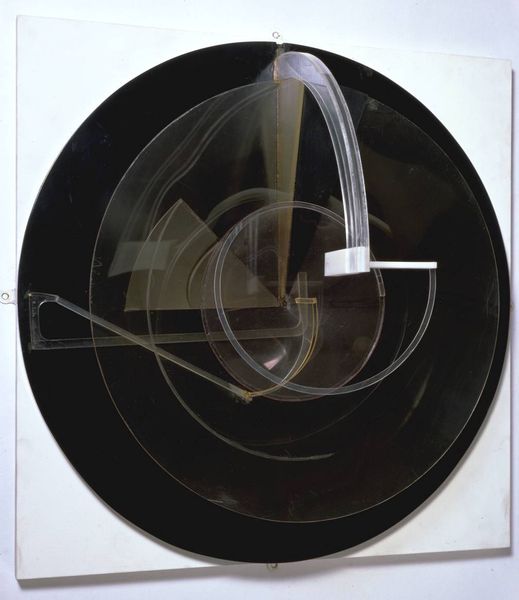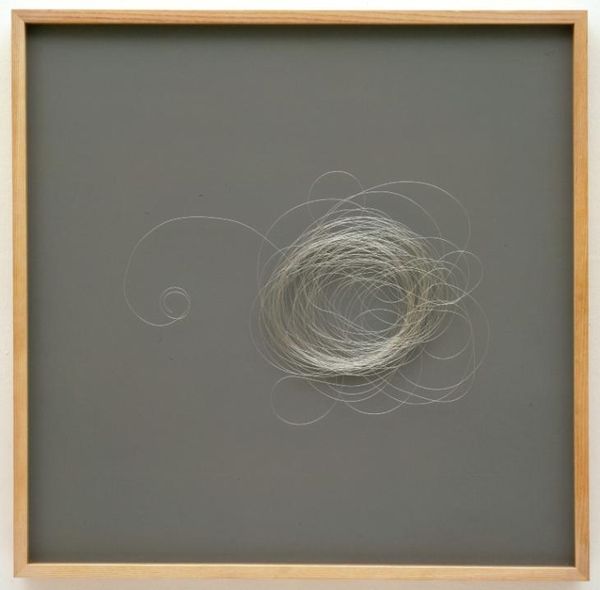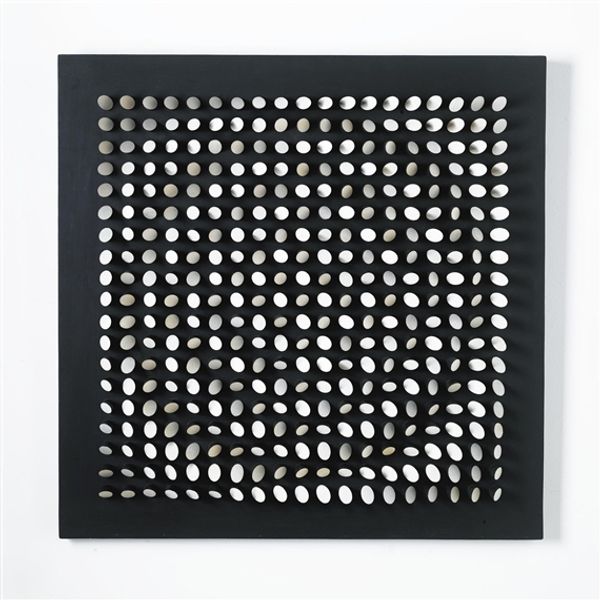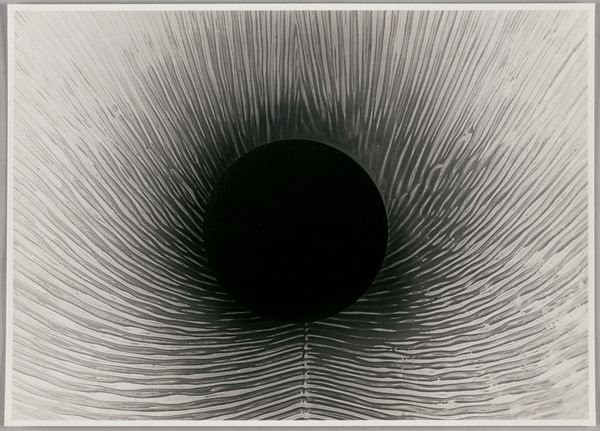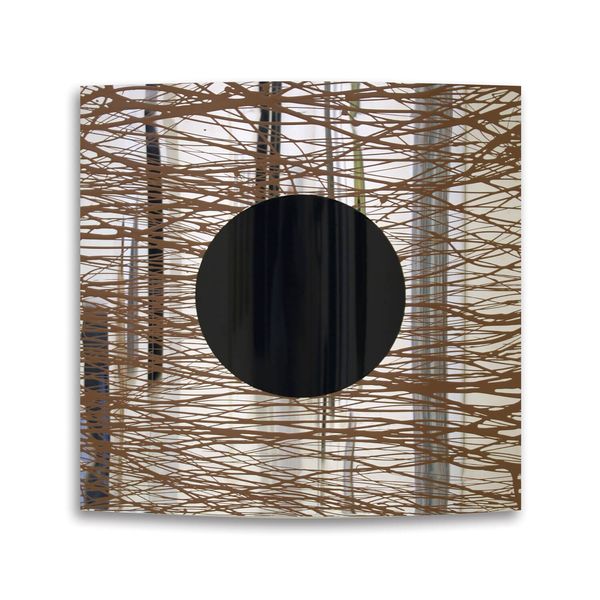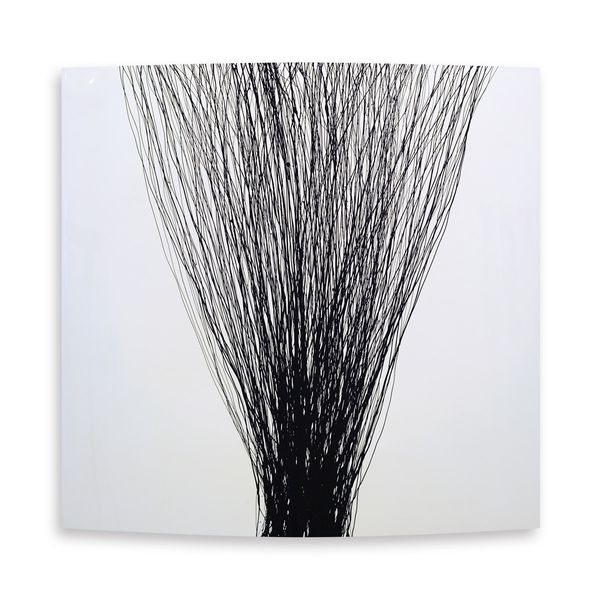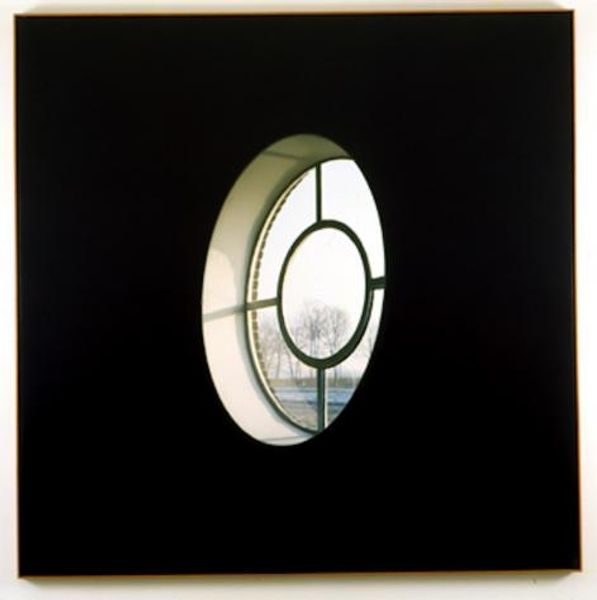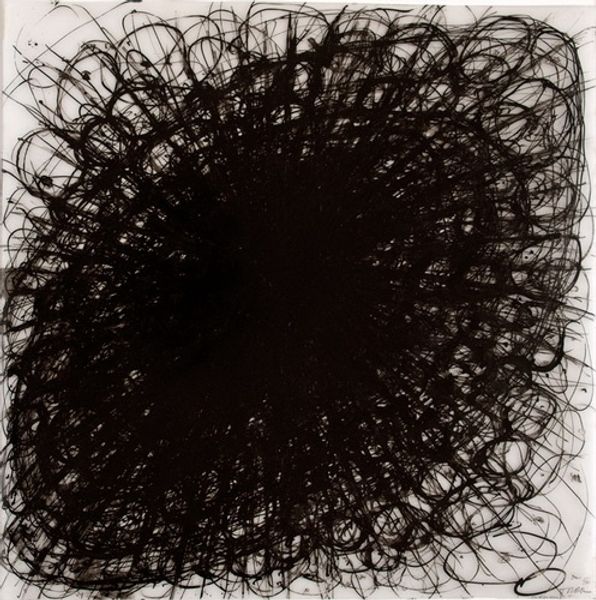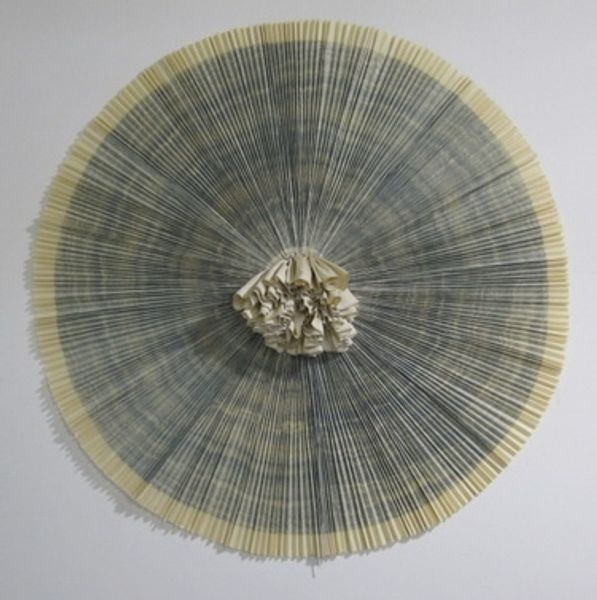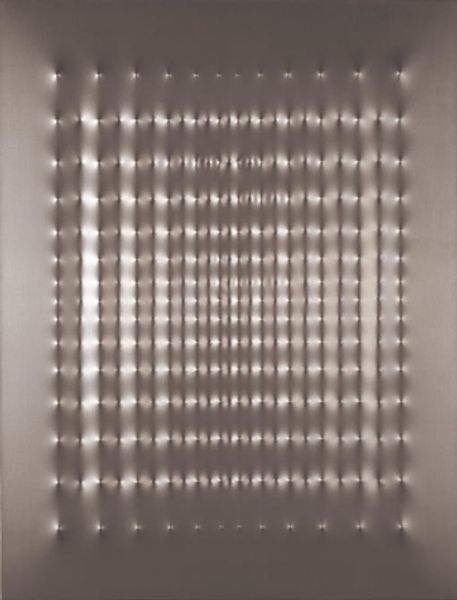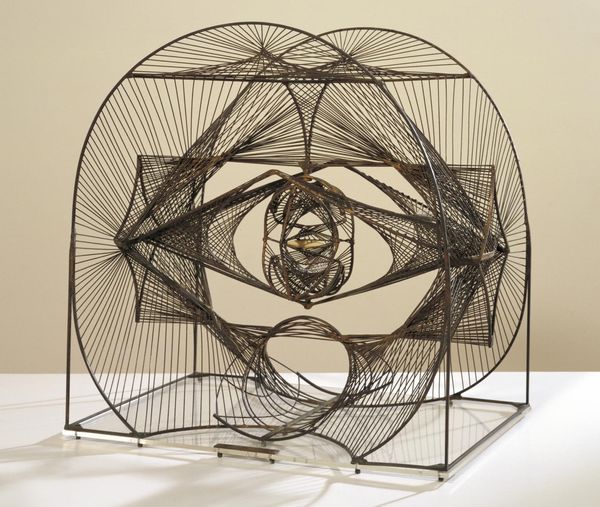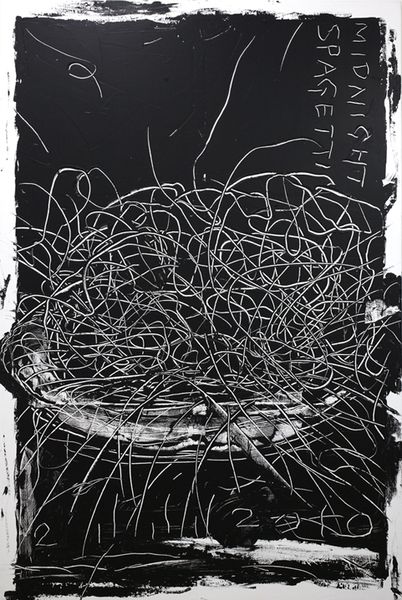
sculpture
#
natural stone pattern
#
3d sculpting
#
3d printed part
#
sculpture
#
sculptural image
#
unrealistic statue
#
3d shape
#
dark focal point
#
sculpture
#
white focal point
#
cutout
Dimensions: overall (diameter of collar): 50.8 cm (20 in.) overall (vitrine): 55.9 x 55.9 x 17.8 cm (22 x 22 x 7 in.)
Copyright: National Gallery of Art: CC0 1.0
Editor: This is Ann Hamilton's "Untitled" sculpture from 1993. It looks like horsehair meticulously arranged in a shadow box. There's something unsettling yet fascinating about it, especially the contrast between the natural material and the manufactured container. What's your interpretation? Curator: It’s interesting to consider the labor involved. The meticulous placement of each hair speaks to repetitive, almost ritualistic acts of making. The artist, in engaging this process, reveals aspects of materiality itself, pushing the boundaries of traditional "sculpture" by embracing craft and textile work. Think of the hands, the hours – do you see a social commentary embedded within that? Editor: I do. It makes me think about the often-invisible labor involved in producing objects, especially things considered "natural". Is the horsehair significant, beyond just being a material? Curator: Absolutely. Consider the historical uses of horsehair: upholstery, musical instrument bows, even fabric. These are items connected to labor and often, class. By framing this common, yet often unseen, material, Hamilton elevates its status, prompting us to examine the production chains and economies tied to seemingly simple elements. What does the container, the shadow box, then represent for you in this context? Editor: Perhaps a way to examine and contain these ideas? It transforms something mundane into a specimen, prompting deeper thought. This piece made me realize how crucial understanding the 'how' and 'why' behind art's materiality is, and the social forces behind what materials and processes an artist chooses. Curator: Exactly. Looking at art through this lens reveals power structures, labor histories, and the consumption patterns we often take for granted.
Comments
No comments
Be the first to comment and join the conversation on the ultimate creative platform.
